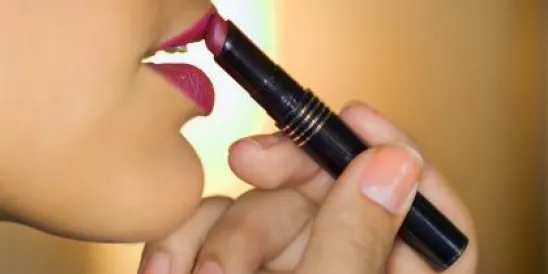Continuing our series on the FTC’s Notice of Penalty Offenses Concerning Endorsements, this post considers the issues of falsely attributed, mischaracterized, and fabricated endorsements – practices that the FTC highlighted in its Notice as unfair or deceptive. In particular, the FTC stated that:
-
It is an unfair or deceptive trade practice to make claims which represent, expressly or by implication, that a third party has endorsed a product or its performance when such third party has not in fact endorsed such product or its performance.
-
It is an unfair or deceptive trade practice for an advertiser to misrepresent that an endorsement represents the experience, views, or opinions of users or purported users of the product.”
-
It is an unfair or deceptive trade practice to misrepresent an endorser as an actual user, a current user, or a recent user of a product or service.
The FTC cited several prior decisions in support of its Notice, including:
-
Ar-Ex Cosms., Inc., 48 F.T.C. 800 (1952). The advertiser, Ar-Ex, touted that its Special Formula (Non-Permanent) Lipstick was the only lipstick recommended by third party product-testing organization, Consumers’ Research, for women who suffer from cracked, sore, dry, or chapped lips. However, Consumers’ Research had merely noted that Ar-Ex sold lipsticks free from certain compounds—not that it recommended the products. The FTC therefore found the advertiser’s claim to be false and misleading.
-
J. Reynolds Tobacco Co., 46 F.T.C. 706 (1950). The FTC determined it was deceptive for the makers of Camel cigarettes to advertise using testimonials that did not accurately reflect the endorsers’ opinions. Camel recruited a number of individuals to sign off on testimonials, in exchange for compensation. But some of these individuals stated that they could not read, and the testimonials they signed off on were not read to them. Other testimonials were fabricated entirely, mischaracterized, or distorted. For example, several testimonials stated or implied the endorser was an exclusive Camel smoker, when the endorser did not smoke cigarettes at all. And some of the testimonials stated the endorser preferred Camel over all other brands when, in actuality, the endorser could not tell the difference between Camels and other cigarettes.
-
Cliffdale Assocs., Inc., 103 F.T.C. 110 (1984). The FTC found the advertiser deceptively implied that testimonials came from current or recent product users of its “Ball-Matic” device. For example, the testimonials used language like “. . . now I get four miles more per gallon” and “now that I have installed your unit . . .” (emphasis added). In truth, the endorsements were written five to six years before the date of the advertisements – not by individuals who had currently or recently used the device.
The FTC’s Endorsement Guides are consistent with those decisions, stating that:
-
“Endorsements must reflect the honest opinions, findings, beliefs, or experience of the endorser.” 16 CFR § 255.1(1). Therefore, in order to make a claim that a third party endorses your product or its performance, the third party must actually endorse the product or its performance.
-
“When the advertisement represents that the endorser uses the endorsed product, the endorser must have been a bona fide user of it at the time the endorsement was given. Additionally, the advertiser may continue to run the advertisement only so long as it has good reason to believe that the endorser remains a bona fide user of the product.” 16 CFR § 255.1(c).
-
“Advertisements presenting endorsements by what are represented, directly or by implication, to be ‘actual consumers’ should utilize actual consumers in both the audio and video, or clearly and conspicuously disclose that the persons in such advertisements are not actual consumers of the advertised product.” 16 CFR § 255.2(c).
Allegations of misattributed, false, or mischaracterized endorsements have made headlines in recent years, as brands have attempted to capitalize on the value of celebrity endorsements. This often arises when a celebrity or public figure is spotted using an advertiser’s product. For example, when then President Barack Obama was photographed wearing a Weatherproof jacket on a trip to China, Weatherproof turned this photograph into a billboard in Times Square. A White House aide publicly responded, stating “[t]his ad is clearly misleading because the company suggests the approval or endorsement of the president or the White House that it does not have.” Weatherproof voluntarily agreed to take down the billboard.
Similarly, when actress Katherine Heigl was photographed carrying Duane Reade shopping bags, the pharmacy Tweeted the image, with the caption “Love a quick #DuaneReade run? Even @KatieHeigl can’t resist shopping #NYC’s favorite drugstore.” In response, Katherine Heigl filed suit in the Southern District of New York, alleging violations of the Lanham Act, New York state unfair competition law, and the right of publicity. Heigl’s complaint sought $6 million in damages, though the parties later reached a settlement, the terms of which were not disclosed.
In more extreme cases, brands have faced allegations that they fabricated celebrity endorsements out of whole cloth. For example, in early 2020, Tom Hanks spoke out against an ad for CBD products that featured a photo of the actor, alongside a quote he said was falsely attributed to him. Calling it a “false and intentional hoax,” Hanks stated “I’ve never said this and would never make such an endorsement.” Celebrity doctor Dr. Oz was featured in the same ads, and re-Tweeted Hanks’s message, adding “[t]his is a fake and misleading advertisement intended to take advantage of consumers using false claims and our likenesses illegally.”
With the rise of influencer marketing, endorsements from celebrities and other public figures are more valuable than ever before. Advertisers should be careful to convey any celebrity or influencer endorsements in a way that is faithful to the endorser’s opinion and message – particularly now that the FTC’s Notice of Penalty Offenses has identified this as an area of focus for the FTC.
These portions of the Notice of Penalty Offenses are also of particular importance for advertisers who use consumer endorsements or reviews in their advertising. For example, if a television commercial depicts paid actors rather than actual product users, this should be clearly and conspicuously disclosed. See 16 CFR § 255.2, Example 6. And if a consumer appearing in an advertisement says something or is portrayed in a manner that suggests the consumer is a current or recent product user, the advertiser should periodically verify that remains true, or else discontinue its use of that endorsement after a reasonable amount of time. Advertisers who quote consumer reviews in their advertising should also take steps to confirm that each such consumer actually bought and used the product, and should keep records to that effect. See, e.g., Function Inc. (Shampoo and Conditioner), NAD SWIFT Case #6938 (February 2021) (cautioning that “advertisers using consumer reviews in their advertising should maintain a record of reviews to demonstrate that each review represents a person that has used the product”).





 />i
/>i

